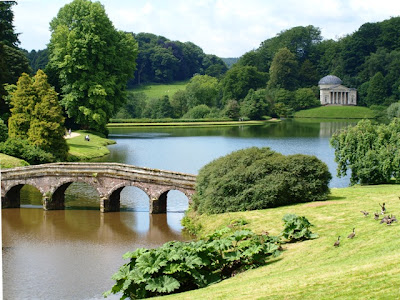Botanical columns support Stourhead
Wild carrot stems are said to have inspired the columns in Greek Temples, Acanthus mollis the Corinthian capital at the top. Here is a column with its ornate capital inside Stourhead House; to its right is the stem of a local umbelliferous plant (not a wild carrot but close enough).
I'm sure there was some Acanthus mollis growing in the Stourhead garden but I didn't take any pictures of it. There is plenty in my home garden at Kew but again, no photo. Instead I've borrowed one from Climate Change Gardening site:
You get the general idea.
I did find the columns inside the Stourhead House a little odd. I'd much prefer to see them outside, and better still in Greece. All in all, the garden is where I'd choose to be at Stourhead so here are a couple more pictures of plants that haven't, as far as I know, inspired great architecture. Perhaps they are inspiration enough on their own.
Note: I visited Stourhead today on the way to Trebah Garden (tomorrow's destination in sunny Cornwall). Stourhead is advertised as 'one of the world's finest 18th-century landscape gardens'. It was created in the 1740s by Henry Hoare (the second, I believe). He scattered temples and grottos around the 2,650 acres, and planted some the first of what is now a very impressive collection of trees. Stourhead House is described as 'a majestic Palladian mansion'; the Regency library has, I noticed, a nice bound collection of the works of Samuel Johnson. And that's worth a couple more pictures...









Comments